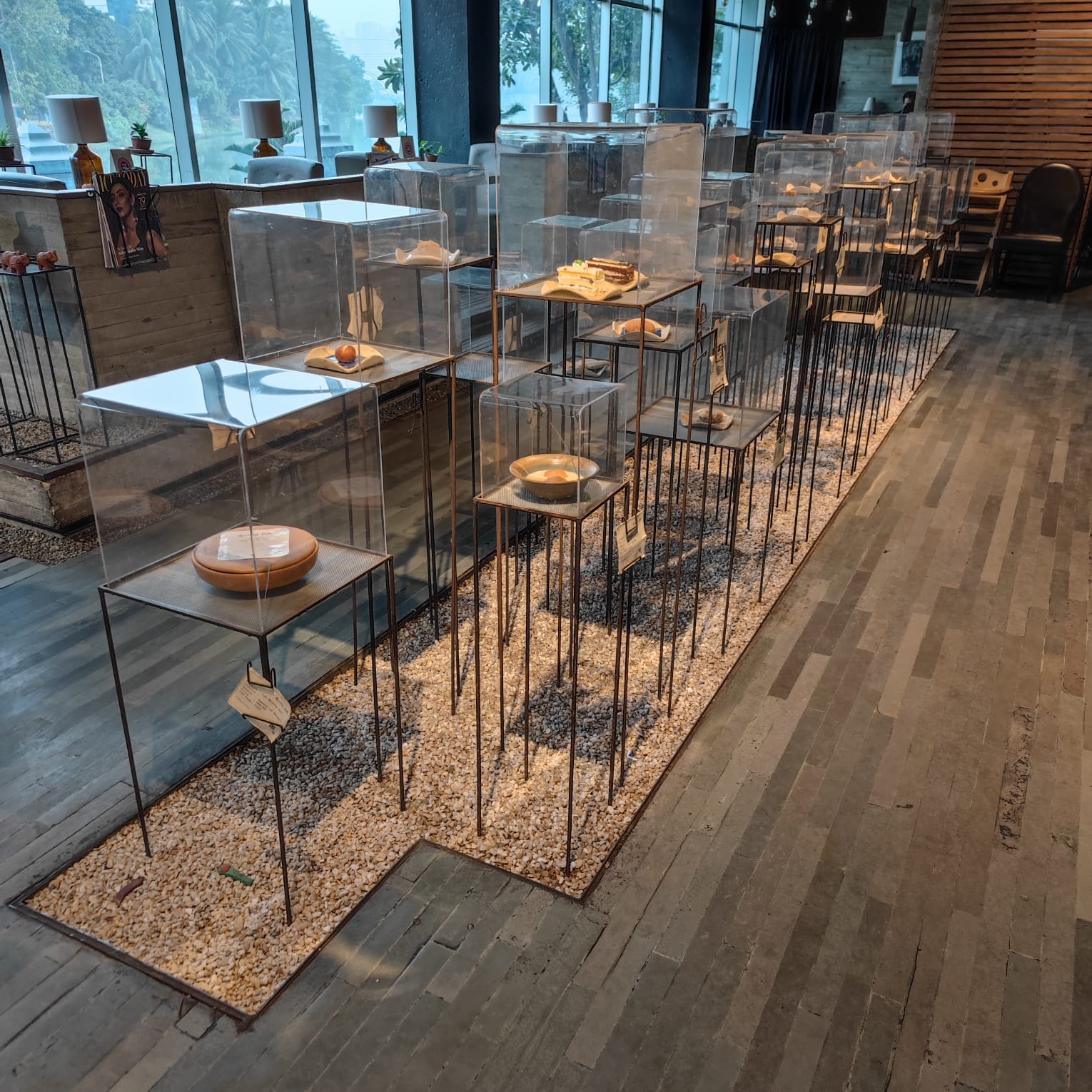Food in Bangladesh might look and sound familiar. And that’s where the similarity ends.


Bangladesh is one of the most underrated food destinations in the world. I have travelled to 33 countries so far, and I can honestly say that the food in Bangladesh is one of the best I’ve ever had. Not one meal I had during my 12-day visit disappointed me. Just as in India, street food is easily found across Bangladesh, no matter which city, town, or village one visits. Food entrepreneurship probably comes easily to Bangladeshis, which also probably explains why most “Indian” restaurants overseas are Bangladeshi-owned.
A lot of Indians think Bangladeshi food is similar to what they can eat in Kolkata, or anywhere in West Bengal. Reality is far from this. The taste of Bangladeshi cuisine is quite different from what is eaten in West Bengal. Naturally, there will be an occasional bit of overlap, especially closer to the border, but overall, Bangladeshi food has its own character and personality. For instance, in the cuisine of West Bengal, chilli heat is minimal or totally absent, chillies are used quite liberally in Bangladesh.
Biryani, or kachchi, as it is popularly known, is just as popular in Bangladesh as it is elsewhere in the subcontinent. Kachchi is named for the “kachchi” style of preparation, as opposed to the “pakki” style. It is made either with long-grained basmati rice or a short-grained chinigura variety. Like its Kolkata counterpart, it is sometimes served with a piece of potato, or with a kabab, and is by default beef or mutton.
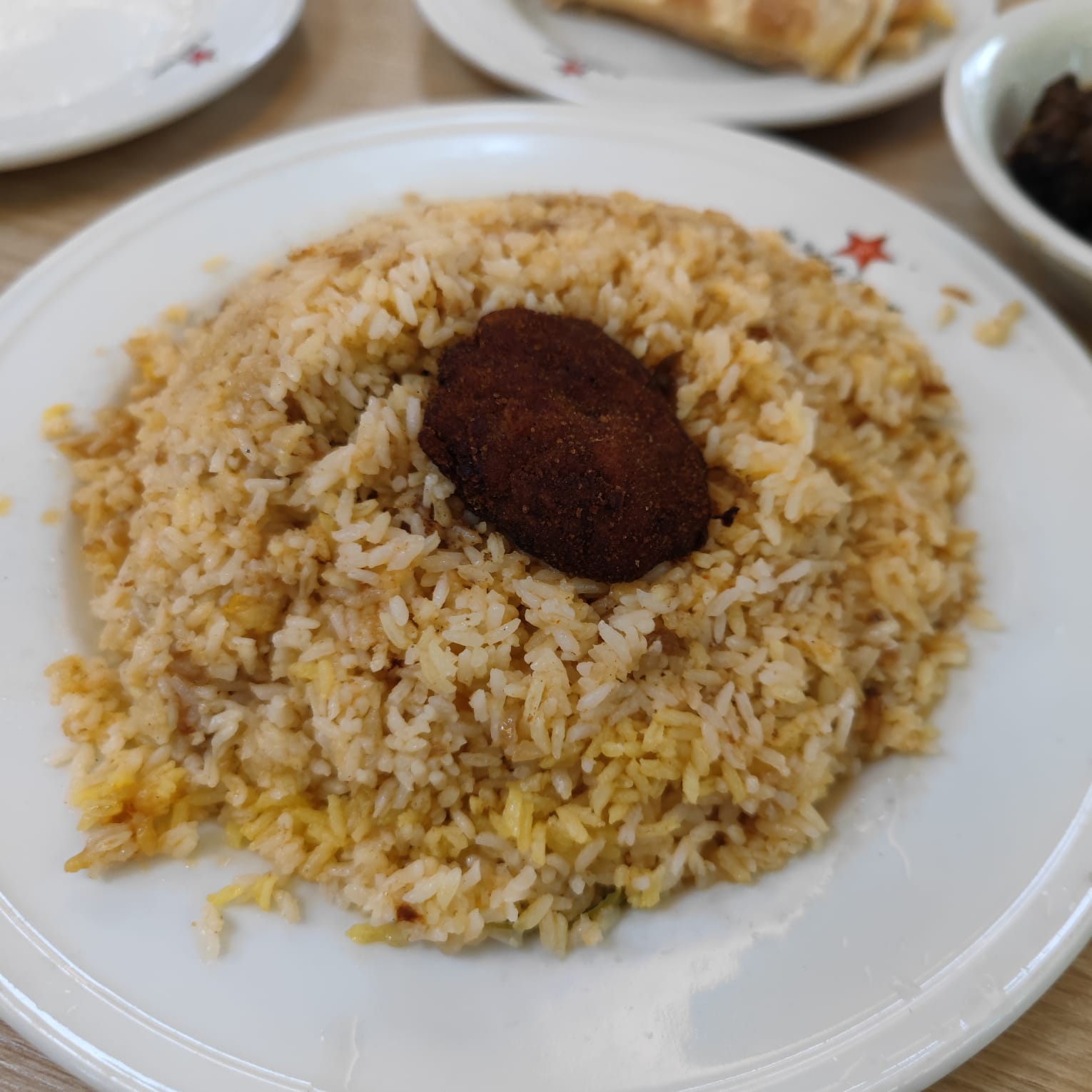
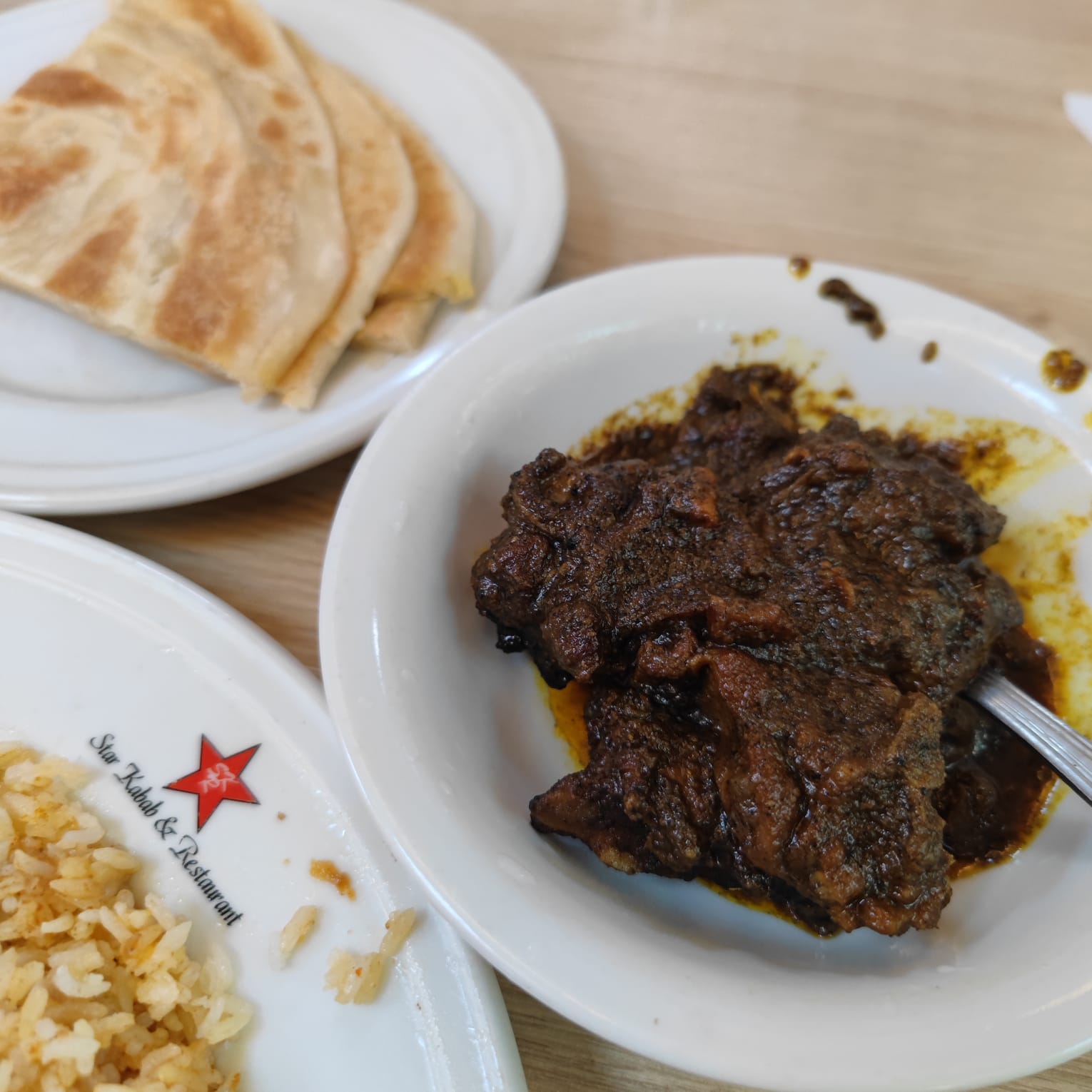
For a chicken-based rice dish, Bangladeshis typically eat the morg pulao, preferably made with a country chicken. It is a simple-looking dish but is packed with flavour and in my opinion, tastes better than a biryani. It is also made with chinigura rice. If one looks up recipes of Bangladeshi biryani or kachchi on the internet, they will find that the recipes often call for some unconventional ingredients like tomato ketchup, plums and so on. Some may frown at these ingredients in a biryani, but they render a flavour to Bangladeshi kachchi which is unique, and very unlike a Kolkata biryani.
Other one-pot rice dishes worth trying in the region are akhni from Chittagong and tehri.
Biryani in Bangladesh does not come with accompaniments such as raita or salan. Typically it is accompanied by borani, which is, to me, one of the most refreshing drinks on the planet. This is a yoghurt drink made with mint, coriander, green chilli, and assorted spices. It’s sweet, sour, salty, tangy, and spicy, all at the same time. Borani is a standard order with biryani and found everywhere, from restaurants to family functions to supermarkets (in a ready-to-drink version as well as a masala which you mix in yoghurt along with the fresh ingredients at home). It is probably the second most popular drink after tea across the country.



Sultan’s Dine (basmati biryani) / Star Kebab and Restaurant (short-grain biryani)
The chaat in Bangladesh is a different beast altogether. The names will look familiar to someone from India, but the dish will taste and look completely different. Chotpoti is the typical crowd favourite. It’s similar to the Indian ghugni or ragda. The ubiquitous pani puri or fuchka is not at all like we are used to in India. There is no pani at all in a Bangladeshi pani puri! Instead, they stuff a fuchka with various fillings and provide a small quantity of sauce on the side which may be made from tamarind or chilli. The fuchkas in Bangladesh are made with talmakhana seeds in them which gives them a unique taste and are delicately crispy. The bhel puri is also very different from what is found in India. It is similar to the Indian papdi chaat, and doesn’t come with any puffed rice. Pretty much all chaat dishes in Bangladesh are topped with shredded boiled egg which is uniquely Bangladeshi.

Armanitola, Near Tara Masjid

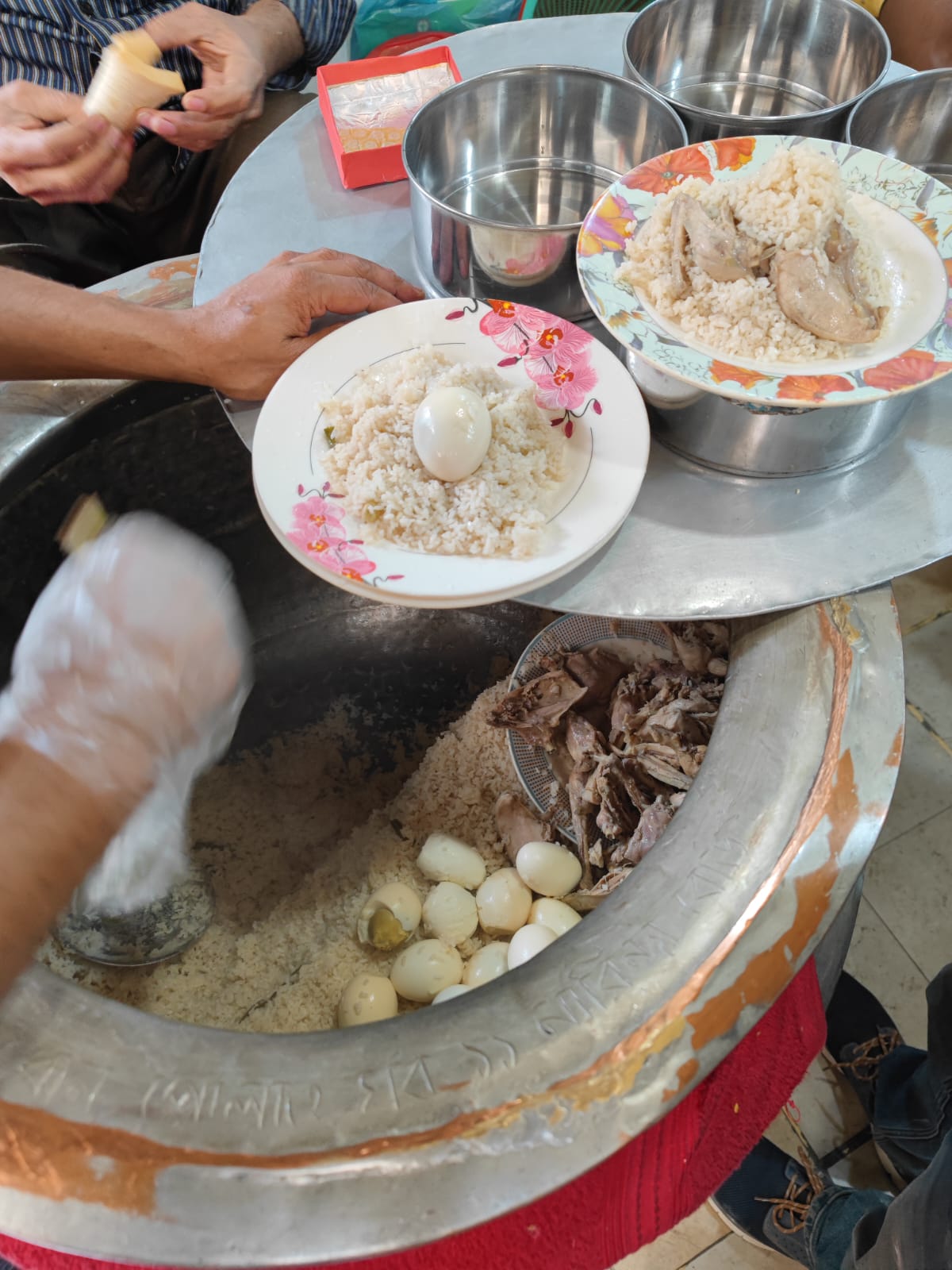

Even though Bangladesh is a lot smaller in size compared to India, it does have its own unique regional cuisines. Chief among them is the national favourite of kala bhuna which originates from Chittagong (now Chattogram). It is typically made with mutton or beef, and looks similar to the kosha mangsho of West Bengal. The taste, however, is very different.

Mejjainna Bari and Shaad Restaurant

Chittagong is also home to the legendary mezbaan or mejbaan/mejjaan as it’s locally called. A mezbaan is a community feast. Typically, it is hosted in order to celebrate any occasion but one sometimes does not need a reason to host one. If one is feeling very generous, they may host one just for the heck of it! If a well-to-do person or family is hosting a mezbaan, it is free for all, and no invitation is needed. Any random stranger walking past the feast can join in and have a meal, no questions asked. In the one that I visited, it was expected that 15,000 people from the surrounding areas would eat their fill. It is not unusual for 20,000 or more people to be fed at a mezbaan.
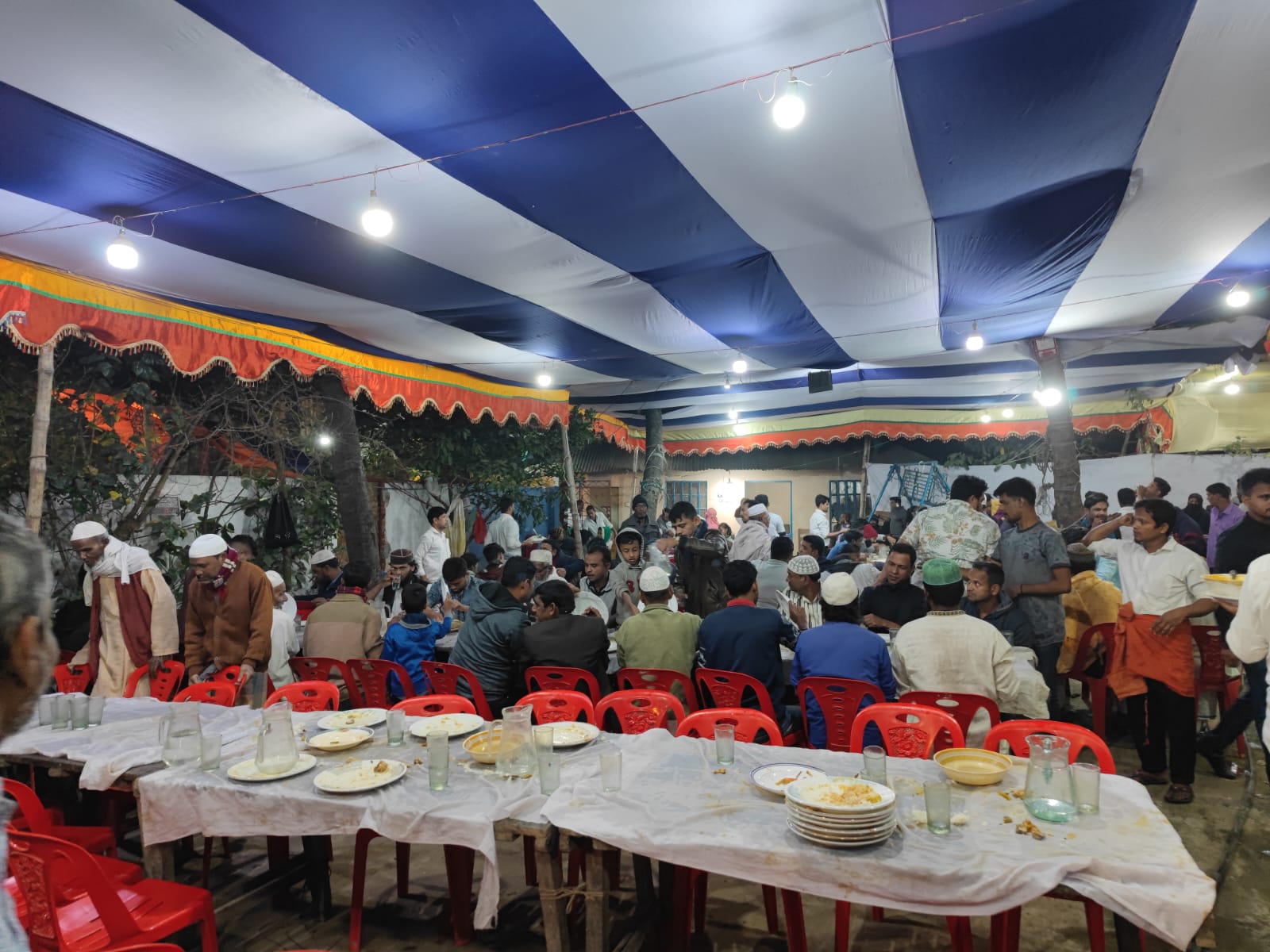
There is a social order to these feasts. People known to the hosts, the folks who are specifically invited, will have a separate dining area and will be offered some special dish(es) in addition to what everyone else gets to eat. A mezbaan hosted by a Muslim will have beef on the menu whereas a mezbaan hosted by a Hindu will have fish on the menu. Locals in Chittagong are happy to take a visiting guest along to a mezbaan if one is taking place. Visitors just have to make a local friend and express the desire to attend one, or just walk into one if they come across a mezbaan. Some restaurants like Mejjainna Bari and the Zaman Hotel in Chittagong also offer mejbaani food but it is nothing compared to the authentic mejjaan experience.
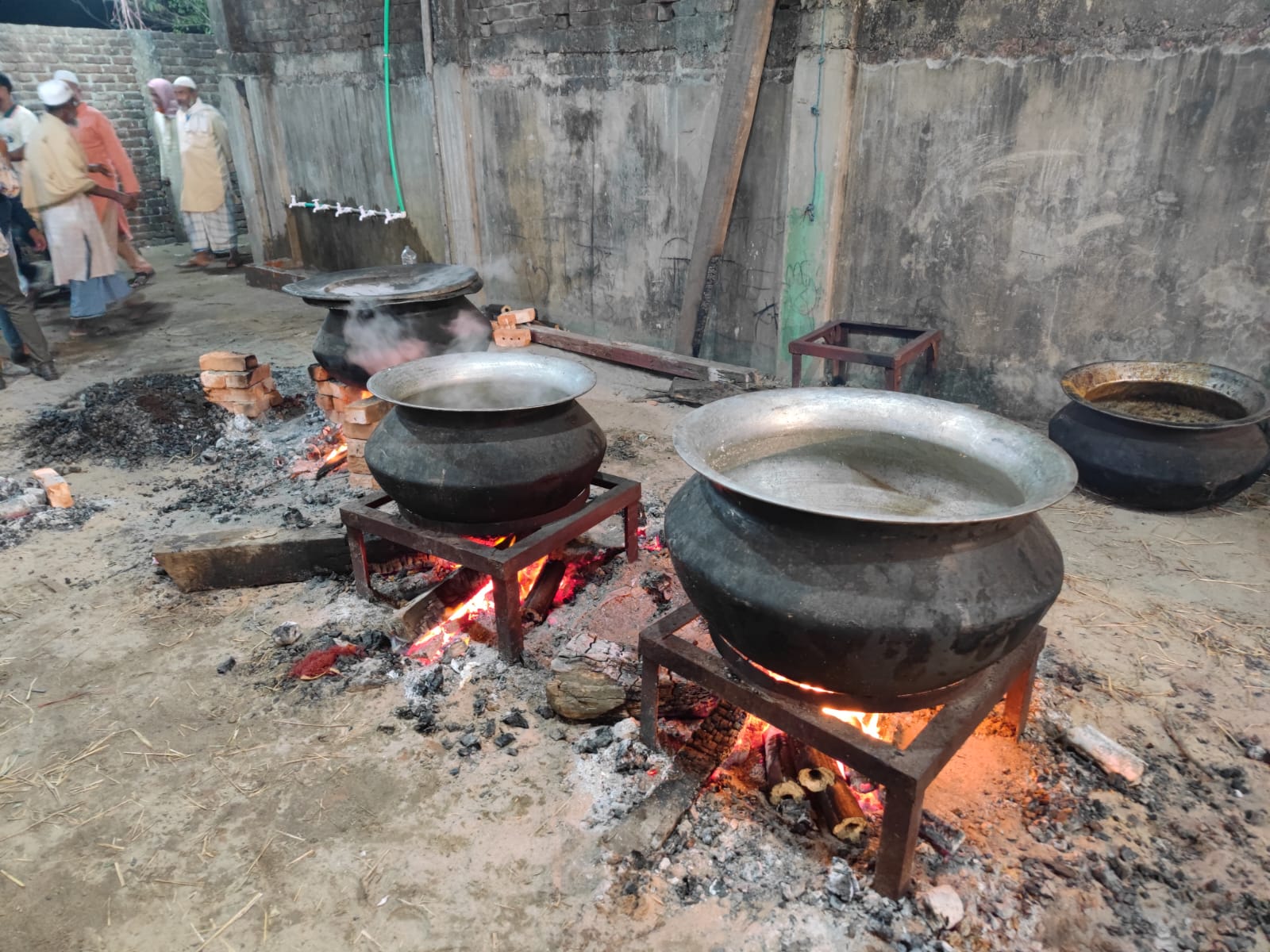
In Bangladesh, the Portuguese presence for close to 140 years in the 15th and 16th centuries, introduced their baking techniques to Chittagong. These remnants can be found in Gani Bakery which sells their famous bela biscuit, a staple among Bangladeshis to have with their daily chai all over the country. Bela has the taste and texture of a rusk and is still baked in a 150-year-old oven first built by the bakery’s founder.

Bakarkhani is a street food and bakery favourite with its own regional variations. In Dhaka and Chittagong, it is the size and consistency of a cookie or biscuit and is available in two versions, sweet or salty whereas in Sylhet it is in the size and consistency of a paratha with a sweet or savoury filling. Bakahkhani can be found in any of the Old Dhaka shops.
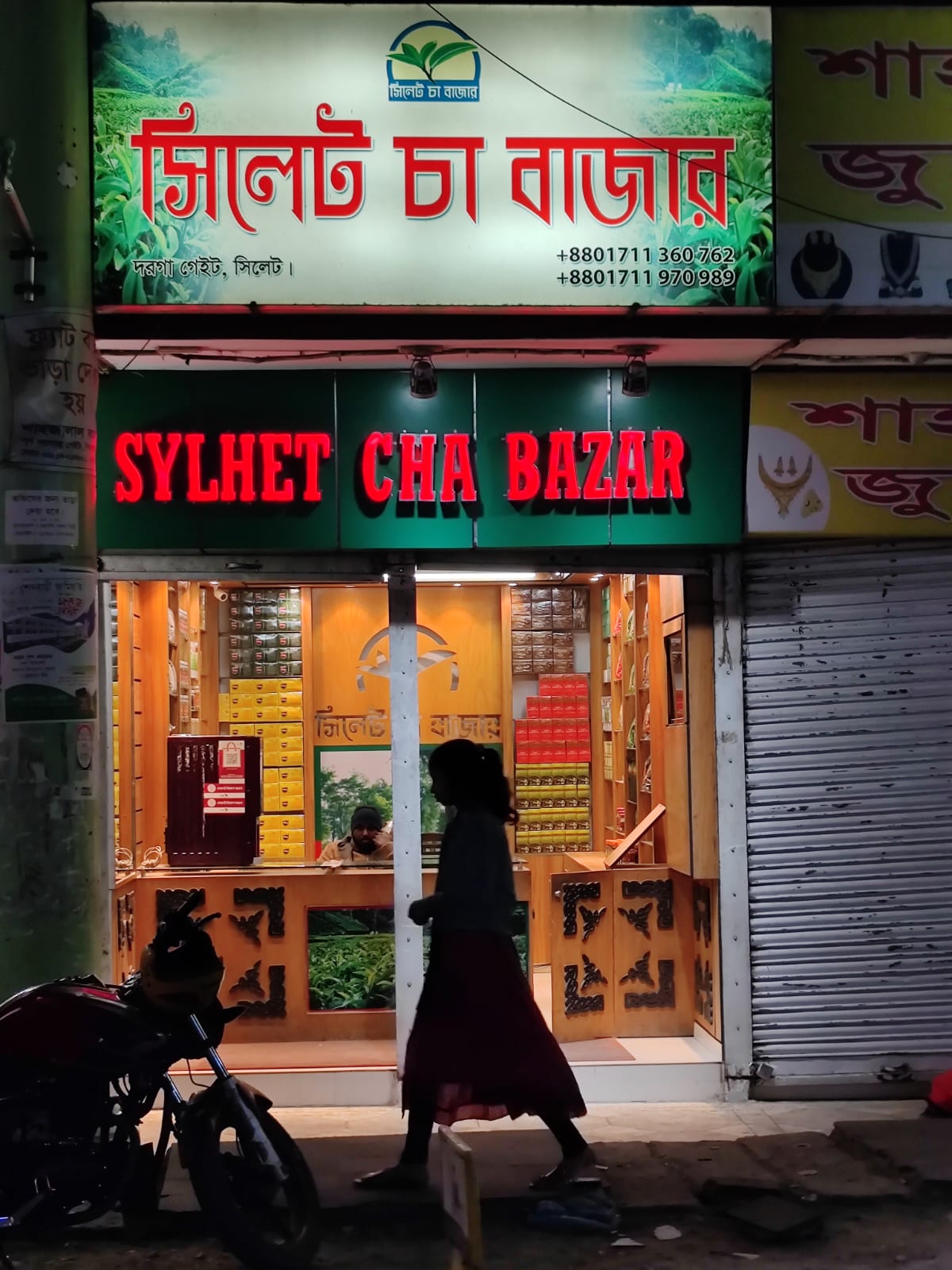

Austagram cheese, also known as Dhakai ponir is unique to the subcontinent and should not be confused with the Indian paneer. While paneer is made by curdling milk using an acidic medium, Dhakai ponir is made using rennet making it the only “true” cheese in the subcontinent. While it may look like Indian paneer, it tastes more like salty mozzarella. One will find many street vendors selling ponir in Old Dhaka. They sell two types: less salt and more salt.

Bikrampur Mishatanno Vandar and Moron Chand Sweets

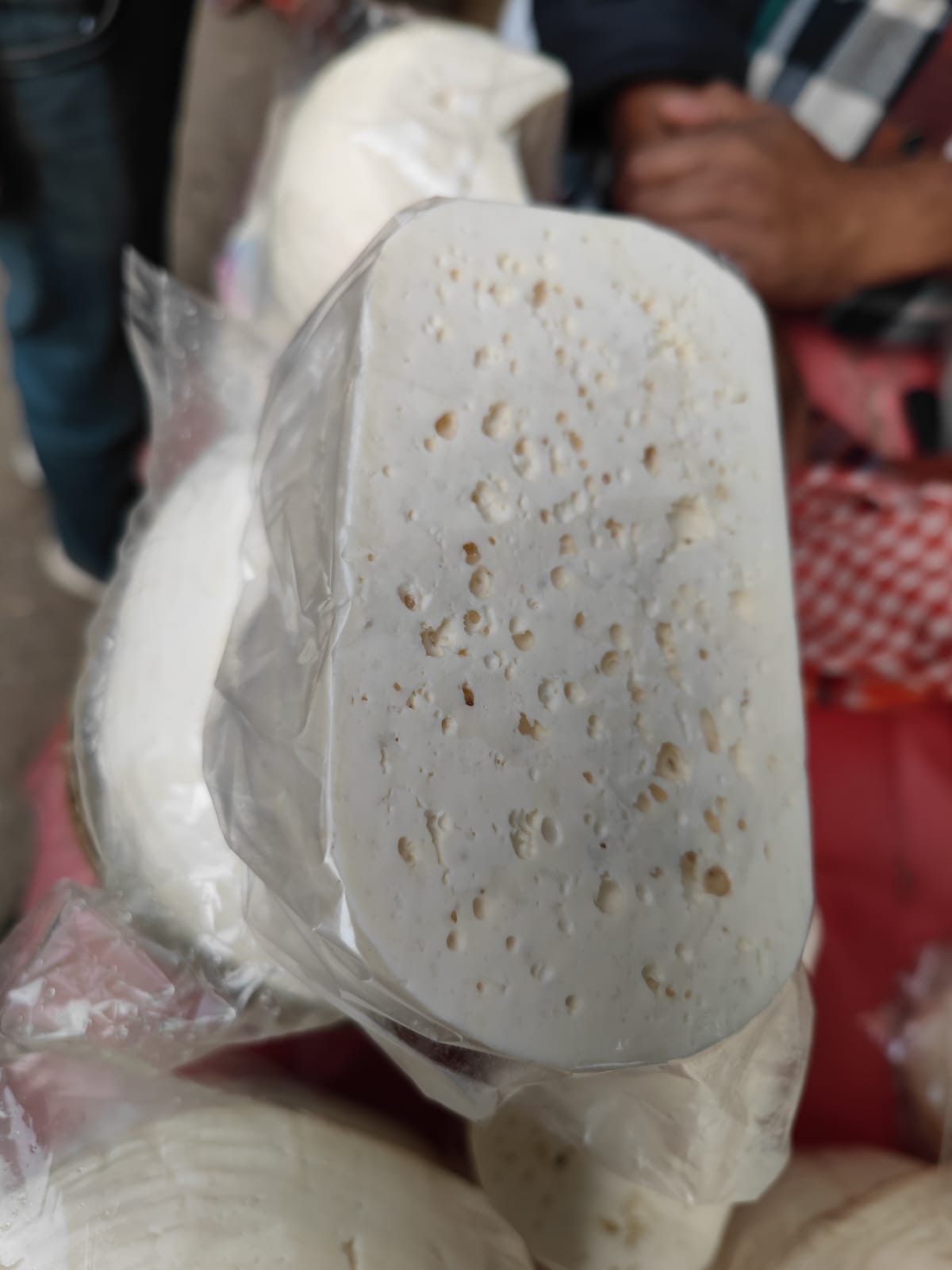
While hygiene in the street food stalls in Puran Dhaka (Old Dhaka) is questionable, a visit here is a must to get the full Dhaka street food experience. One will come across some gems like the jilepis with kalo jeera which are quite different from a traditional Indian jalebi.


There is also a café named Cafe Corner which serves the only Anglo dish in all of Bangladesh – a mutton crumb chop. Although the dish is boneless, there is a small mutton bone left in it to indicate that the meat used is mutton and not anything else. Apparently, there was a rumour at one point that they were using dog meat which seems to be the rumour of choice in the subcontinent by those who want to harm your food business.
Street and bakery food in Dhaka is truly wide-ranging, unique, and quite delicious! You will find all sorts of interesting savouries like mutton liver samosas, beef bacon puffs, and so on. There is the Bangladeshi Mughlai paratha which is like a Hyderabadi luqmi but is stuffed with egg instead of minced meat or potato. In some places, it may look like a spring roll. Mughlai Paratha is almost the same everywhere in Dhaka. Any local restaurant will serve it as an evening snack.


There is the keta puri which is a mini poori stuffed with potato and chopped green chili and served with a watery tamarind dip and quail eggs with alur chop. Some of these can be found far away from the tourist circuit in the Bihari camps of Mirpur where various organ meats are also a delicacy. The Bihari community of Dhaka is a persecuted, Urdu-speaking populace of Dhaka who had sworn allegiance to Pakistan during the Bangladesh Liberation struggle and are still hopelessly waiting in ghettos to migrate to Pakistan, which has since disowned them.
Bangladesh seems to have mastered processed potato snacks. Pran, Bombay Sweets, and BD Foods are some of the well-known brands. Pran also sells some of their products in India. I would highly recommend loading up on whatever processed potato snacks one comes across in shops and supermarkets. They are quite addictive.


And now for mishti. From what I observed, the repertoire of Bangladesh-er mishti isn’t as extensive as the mishti seen in Kolkata. Most of the sweets here are also cloyingly sweet compared to those in Kolkata. Bangladesh however lays claim to two popular varieties of mishti of the subcontinent: the mishti doi and roshmalai. Bogura, a town north-west of Dhaka about an hour away from the border with India makes a doi which is world famous. It is exported all over the world as well as shipped across Bangladesh. Bogura Doi as it’s known is a variation of India’s mishti doi.

Shampa Dhadi Bhandar (a small shop adjacent to the highway; not on the map) and Sherpur
Matri Bhandar of Comilla, a city on the Chittagong-Dhaka highway claims to have invented the roshmalai. There are a lot of copycats of Matri Bhandar all over Comilla, but the OG is the one that is always crowded and runs out of the treat by mid-day. Banglar Mishti is a nice mishti boutique, coffee shop, and restaurant in the heart of Dhaka. They have a museum-style display of all their mishtis with a description of their origin in Bangladesh. Premium Sweets is a chain of sweet shops which sell a range of Bangladeshi mishti. They also have restaurants in some of their stores.

